Coin Hongwu tongbao
A round copper alloy coin with a square hole in the centre, called fangkong qian 方孔錢. These appeared in various denominations, mostly as tongbao 通寶 (“common currency”) coins, which were worth one monetary unit, yuanbao 元寶 (“original currency”) and zhongbao 重寶 (“heavy currency”) which had higher denominations. In many varieties and denominations, such coins had been in circulation as standard money since the time of Emperor Gaozu 高祖 (reigned 618–626), the first emperor of the Tang Dynasty (618–907) until the end of the Qing Dynasty (1644–1912). The inscription on the coin usually consists of two characters, reading from top to bottom, indicating the name of the reign or the period in which the coin was minted. The other two characters are to be read from right to left. On the left-hand side of the coin is usually the character bao 寶 (wealth, preciousness), which in combination ... more
A round copper alloy coin with a square hole in the centre, called fangkong qian 方孔錢. These appeared in various denominations, mostly as tongbao 通寶 (“common currency”) coins, which were worth one monetary unit, yuanbao 元寶 (“original currency”) and zhongbao 重寶 (“heavy currency”) which had higher denominations. In many varieties and denominations, such coins had been in circulation as standard money since the time of Emperor Gaozu 高祖 (reigned 618–626), the first emperor of the Tang Dynasty (618–907) until the end of the Qing Dynasty (1644–1912). The inscription on the coin usually consists of two characters, reading from top to bottom, indicating the name of the reign or the period in which the coin was minted. The other two characters are to be read from right to left. On the left-hand side of the coin is usually the character bao 寶 (wealth, preciousness), which in combination with the character on the right means “currency” or “money in circulation”. This is usually the character tong 通 (circulate, be uniform, general or universal), but often alsoyuan 元 (origin, basis) or zhong 重 (weight), which usually denote coins with a larger face value. Thus, the entire inscription literally means “money in circulation at the time of this or that emperor” or “in this or that period of a single emperor’s reign”.
With the Ming dynasty 明 (1368–1644), Chinese territory was reunified under Chinese suzerainty after nearly a century of rule by the Mongol Yuan 元 Dynasty (1271–1368). In the early period of the dynasty, paper money, which had dominated as a means of payment in the previous Mongol dynasty, remained in circulation to some extent until it was completely abolished in the early 16th century, leaving only coins in circulation as the only valid means of payment. The founder of the Zhu Dynasty, Yuanzhang 朱元璋 (1328–1398) or Emperor Hongwu 洪武 (reigned 1368–1398) chose the city of Nanjing (now capital of Jiangsu province) in the south as his capital, and Yongle Emperor 永樂 (reigned 1402–1424) moved his court and institutions north to Beijing in 1421. Nevertheless, there were central government mints in both cities throughout the dynasty, under the administration of the Bureau of Revenue (Hubu ju 戶部局) and Bureau of Labour (Gongbu ju 工部局). In addition to these mints in Beijing and Nanjing, there were already numerous local mints in various provinces. From the Ming Dynasty onwards, the coin naming system was also simplified, as only one name was used, namely the temple title of the emperor throughout his reign.
Although the coin in the photo is slightly worn, the characters Hongwu tongbao 洪武通寶, are clearly visible on the obverse, indicating that it was minted during the time of Emperor Hongwu, the first emperor of the dynasty. The reverse of the coin is blank. It is known that in the Ming Dynasty, letters indicating the mint often appeared on the reverse of coins, but today they are often indistinct, so that it is not possible to extract from them information about the place of minting. (MG)
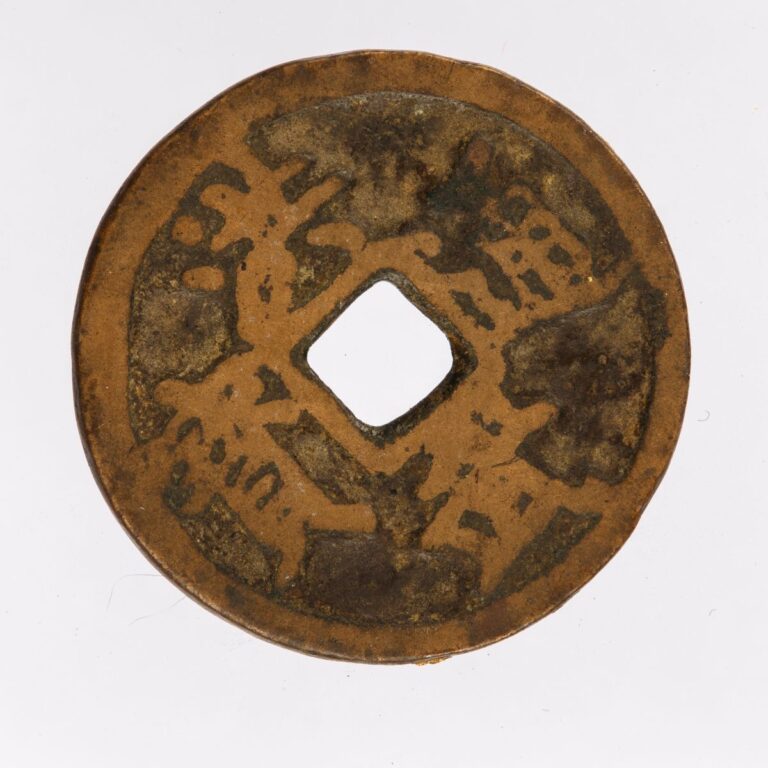
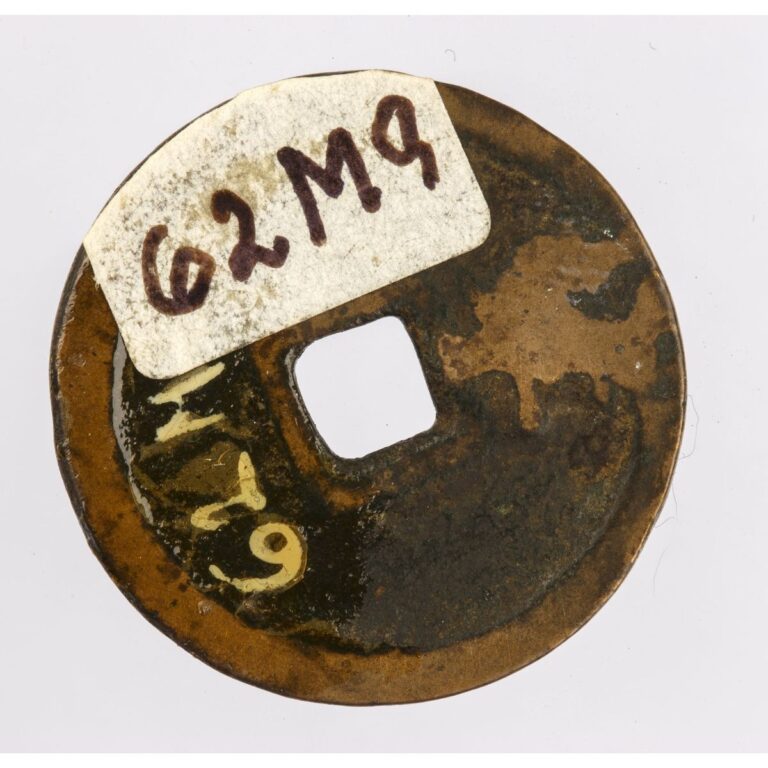
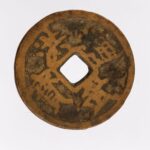
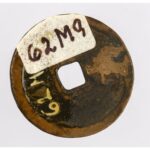

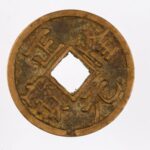








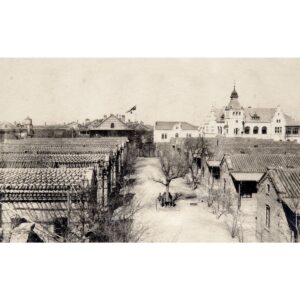











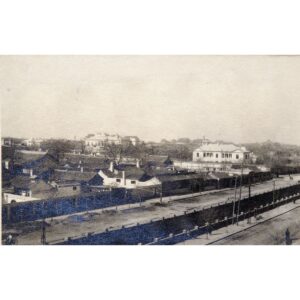












Do you have a comment or additional information about the subject?